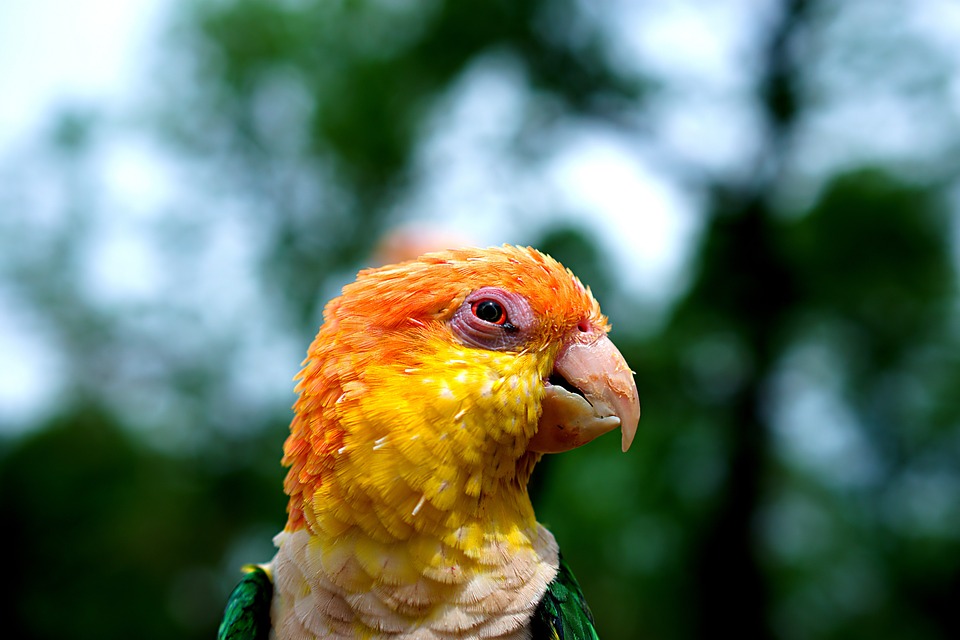Creating a Parrot Retreat: Designing a Space for Relaxation and Quiet Time
Introduction
Parrots are highly intelligent and social creatures that require mental stimulation and downtime to maintain their well-being. Designing a dedicated retreat area for your parrot can provide them with a safe and peaceful space to relax and unwind. In this article, we will explore the key elements of creating a parrot retreat, including its purpose, location, setup, and essential features.
Benefits of a Parrot Retreat
– Improves parrot’s mental health and overall well-being
– Provides a safe space for relaxation and stress reduction
– Promotes positive behavior and prevents boredom
– Enhances the bond between the parrot and its owner
Choosing the Ideal Location
– Select a quiet area away from high traffic and noise
– Ensure good ventilation and natural lighting
– Avoid placing the retreat near household hazards or toxins
Setting Up the Parrot Retreat
1. Selecting an Appropriate Cage: Choose a spacious cage that allows natural movement and exploration. Opt for a cage with a play-top or an attached playpen for added enrichment opportunities.
2. Comfortable Perches: Provide a variety of perches with different widths, textures, and heights to promote foot exercise and prevent foot problems.
3. Nesting and Hideout Spots: Include a cozy nest box or a small enclosed area where your parrot can retreat to for privacy and rest.
4. Toys and Enrichment: Introduce a range of toys, puzzles, and foraging opportunities to keep your parrot mentally stimulated and engaged.
5. Environmental Enrichment: Incorporate natural elements like branches, leaves, or potted plants to mimic the parrot’s natural habitat and encourage exploration.
6. Background Noise Control: Minimize sudden loud noises or disturbing sounds that may cause stress to your parrot. Consider using white noise machines or soothing music to create a calm ambiance.
7. Temperature and Humidity: Maintain a suitable temperature range and humidity level within the retreat area to ensure your parrot’s comfort and health.
8. Safety Measures: Regularly inspect the retreat area for potential hazards, such as toxic plants or loose wires. Ensure that all toys and accessories are parrot-safe and free of small parts that can be ingested.
FAQs (Frequently Asked Questions)
Q1. How much time should I allocate for my parrot’s retreat?
It is recommended to allow your parrot access to its retreat area for a minimum of 2-4 hours daily. However, the specific duration may vary depending on your parrot’s individual needs and preferences.
Q2. Can I let my parrot socialize with other parrots in the retreat area?
While socialization is essential for parrots, it is advisable to supervise any interactions between parrots. Some parrots may not get along well with others and may exhibit territorial or aggressive behavior.
Q3. What should I do if my parrot shows reluctance to use the retreat area?
Introduce the retreat area gradually and encourage your parrot with treats, toys, or positive reinforcement. Allow your parrot to explore and become familiar with the space at its own pace.
Q4. Should I leave my parrot unattended in the retreat area?
It is not recommended to leave your parrot unattended for extended periods in the retreat area, especially if you are unsure of its response to the space. Regular monitoring ensures safety and enables you to address any potential issues promptly.
Conclusion
Designing a parrot retreat area provides your feathered companion with a dedicated space for relaxation, quiet time, and mental stimulation. By carefully considering the location, setup, and essential features, you can create a retreat that caters to your parrot’s specific needs. Remember to regularly assess and update the space to meet your parrot’s evolving requirements, ensuring a happy and contented avian companion.









